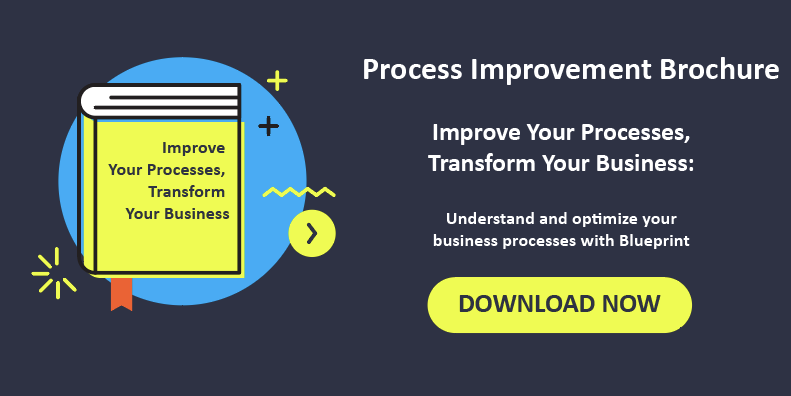The 7 Key Differences Between Project- and Product-Oriented Management
One of the fundamental differences between a newer technology company and a traditional, large enterprise is that technology companies work on products and enterprises work on projects. There’s a direct correlation in how companies are succeeding in the age of software vs the companies that are struggling based on what they focus on and manage.
In this article, we look at the 7 key differences between a project- and product-oriented approach and how the differentiators contribute to delivering value to customers.
Project-oriented management
What is project-oriented management? Project-oriented management refers to a specific objective to create a product that is pre-defined with a clear start and end date. A project approach is essentially governed and driven by the ‘Iron Triangle’: a model that determines that the quality of work is constrained by the time, scope, and cost of the project, irrespective of the value being delivered. The successful project delivers on time and on budget without paying attention to outcomes. In other words: a project mentality isn’t focused on whether the right thing is being delivered, as long as it’s on time, does what was specified in the requirements document, and isn’t over-budget.
Product-oriented management
What is product-oriented management? A product-oriented approach refers to long-lasting teams that are organized around a single product or product family. In this model, a dedicated team delivers incremental improvements to the product in short cycles—short cycles being as small as several times a day, a two-week sprint, or a release cycle of several sprints.
In a product-oriented model, the focus and main driver is delivering value to your customers. This approach allows product teams and organizations as a whole to be nimble and respond to market demands or user expectations, shifting focus whenever the need arises because the objective is always value and not just a finished project that’s on time, within budget, and fulfills a list of static, inflexible requirements defined in an ever-changing marketplace.
1. Risk
In this context, risk is associated with being sure that you are delivering the right value and that it is going to meet your customers’ needs. How risk is managed is the biggest difference between the two approaches.
A project-oriented approach is very rigid; everything is about managing to the ‘Iron Triangle’ and delivering a defined outcome decided up front, on time, and within budget. Projects are therefore very resistant to change which is a major blocker in an age where technology and market expectations change so quickly and significantly. Something decided a year ago, may no longer be valid once the project is delivered but scope is a major pillar of the ‘Iron Triangle’ and nearly impossible to bend. And if something is identified later on that should be included because of the potential value it offers customers, it’s rejected because it’s ‘out of scope.’
A product-oriented approach is tailored to mitigate, and ideally, completely eliminate risk in this context. Comprehensive and effective feedback loops are baked in to ensure maximum value is being delivered to the customer. Since you’re delivering regularly and incrementally, you have the opportunity to implement fast learning cycles to constantly validate that you are building the right thing. It’s much easier to pivot to other priorities if new opportunities arise; your opportunity to pivot is never more than the next 2-week sprint away.
2. Time Frames
Time frames between the two approaches are also very different. Projects are finite; they have a defined start and end date and are essentially one and done.
A product-focused model, on the other hand, is tied to the natural product lifecycle—you are never done until the product reaches its end of life. Resources are also flexible to meet the demands of the product lifecycle and your backlog of items has a much smaller time horizon. The product-oriented approach makes it much easier to manage the ongoing health and maintenance of the product.
A big project, however, can last years. Alternatively, a typical product backlog in a product model usually has a horizon of no more than a few months.
3. Teams
One of the biggest differences between a project- and a product-oriented management culture is with the teams assigned to do the work.
Projects are made up of a group of strangers coming together. They need ramp-up time which comes with an overhead in cost for that. In a project-oriented approach, work is also brought to the teams. Individuals can often be assigned to many projects at once and tend to be focused on the successful delivery of a project instead of the delivery of value to the customer.
In a product-oriented model, teams become invested in the success of their products. A recent Gartner study found that 69% of developers working under a product-oriented approach rated improving the customer experience as a high/critical priority. Only 39% of developers working in a siloed project environment felt the same.
Simply put: You’re going to get better results from a team that is highly invested in what they are building.
4. Prioritization
In project-oriented management, prioritizations are driven yet again by the ‘Iron Triangle.’ Is the project in scope and being developed according to what was defined in the requirements document? Is it within budget? Will it be delivered on time? Priorities are dependent on those three questions and little more.
In a product-oriented approach, prioritization is a roadmap that is hypothesis-driven and focused on the delivery of value; you are constantly re-prioritizing to try and deliver the most value to your customers in the shortest amount of time. Because you deliver incrementally, you are also constantly learning and feeding those learnings back into your prioritization scheduling.
5. Budgeting
Budgeting can often be the single, biggest impediment to moving from a project to a product model.
A project is scoped and managed according to a very finite budget and various milestones. It’s a command and control structure that’s outdated and impedes agility.
In a product-oriented approach, a team is assembled that works to continuously deliver value without much in the way of defined milestones or deliverables. The budget is largely the cost of the people working on the product that make up that team, in addition to some overhead for the equipment they use. It is permanently funded, giving it the autonomy to make the right decisions with the most information.
Many portfolio managers have a lot of difficulty with this approach. A refusal to switch to a product-funding model is one of the major roadblocks when trying to launch a successful agile transformation beyond IT.
6. Success
We have already alluded to the fundamental difference in how success is measured according to the two approaches.
The success of a project is defined according to its ability to deliver to the ‘Iron Triangle’: delivering what was defined upfront, being on time, and staying within budget are the most important metrics. The value it delivers to the customer is negligible; by the time you can evaluate if the project successfully delivered value to your customer, your project has concluded, and the team has to move on.
Product-oriented management is all about the value it delivers to both the customer and the business. It uses a profit-centered approach and is measured on business objectives like increased adoption, increased revenue, or overall productivity gains.
7. Visibility and Alignment
In a project-oriented model, you can get some visibility into how a project is doing against time and budget, but you don’t get regular feedback on how the product is going to impact the business.
Since product-oriented management is tied to business objectives, there is a very high degree of visibility. The difference between a project and product model helps explain how tech companies are able to quickly deliver value that are a good market fit.
For companies that want to prioritize delivering value to their customers and remaining competitive in the age of software and a digital-first experience, product-oriented management is the most compelling and formidable approach.
For more information on how Blueprint can facilitate product-oriented models or digital transformations through powerful process analysis capabilities that enable you to deliver products and value faster, download the brochure, Improve Your Processes, Transform Your Business.
Share this
Recent Stories

Intelligent Automation: A Guide to Everything it Provides

Why Multiple Technologies are Needed for Complex Process Automation


